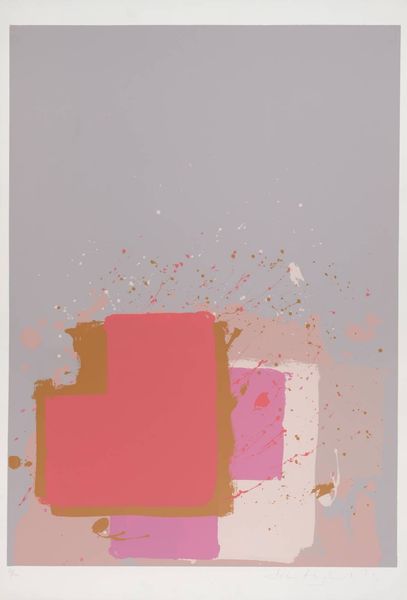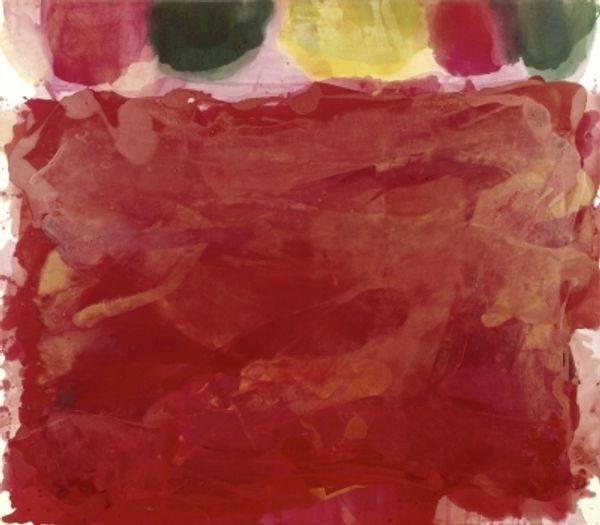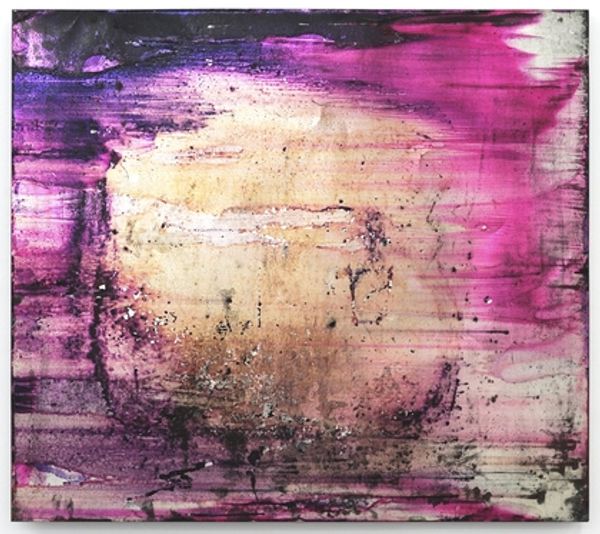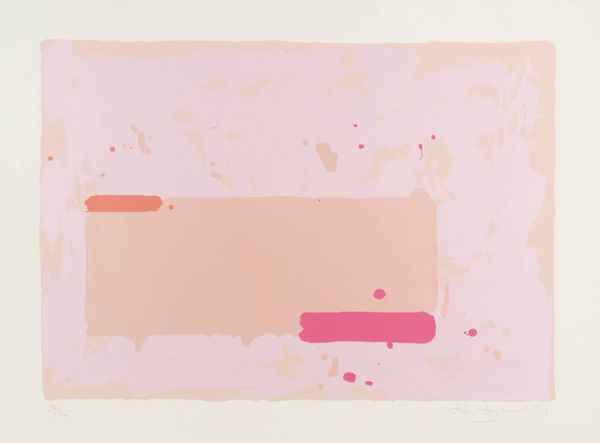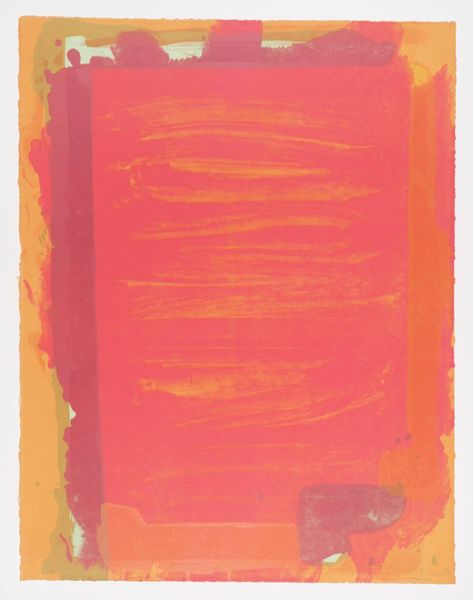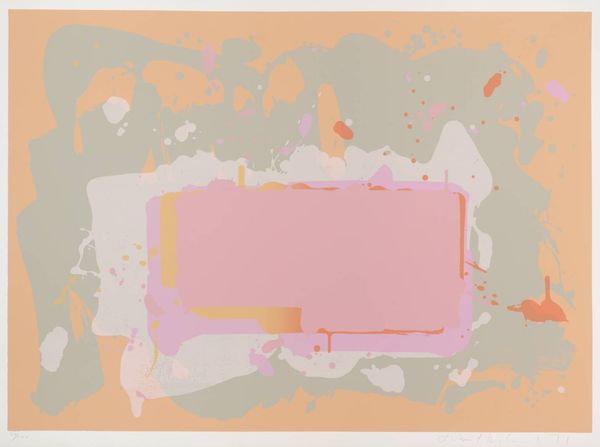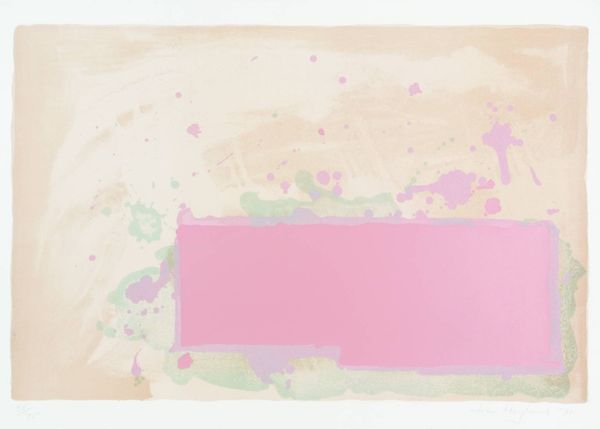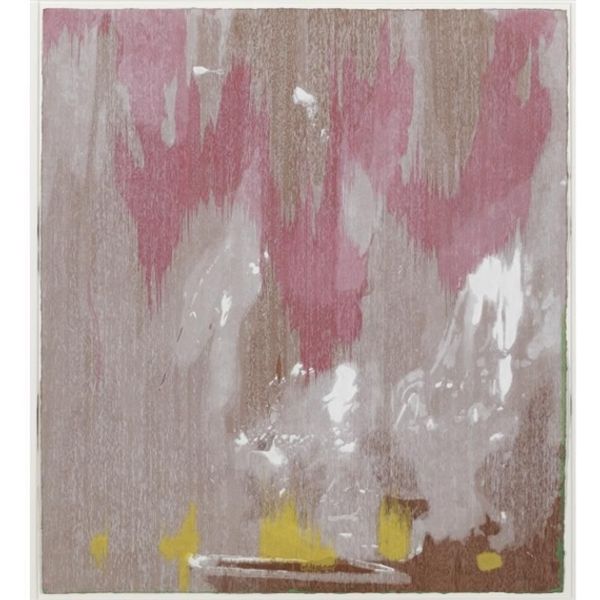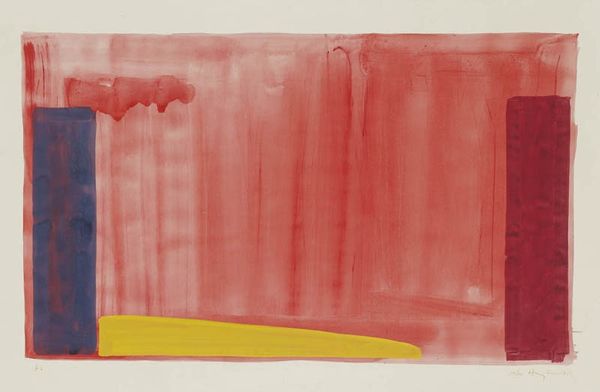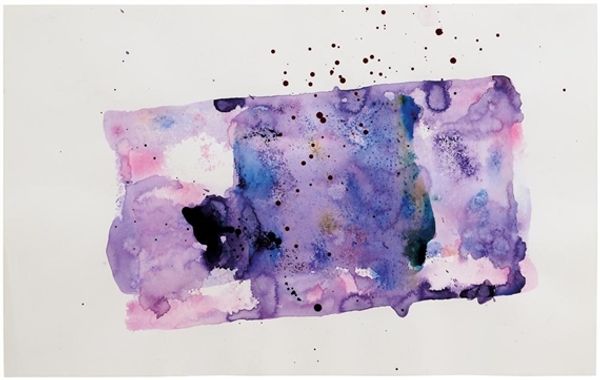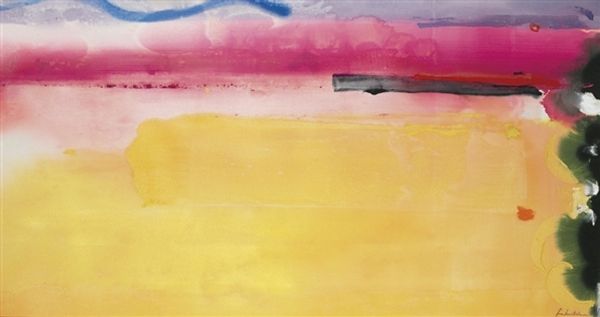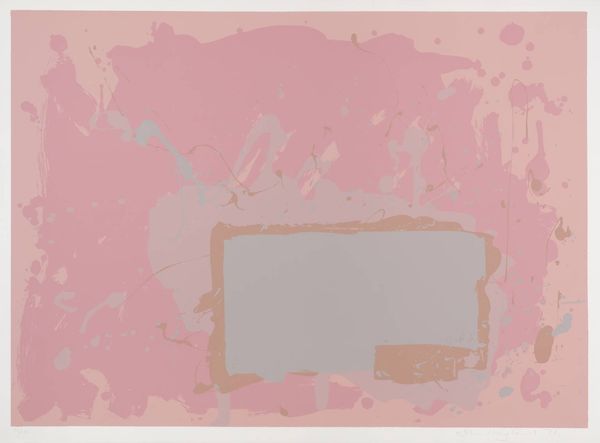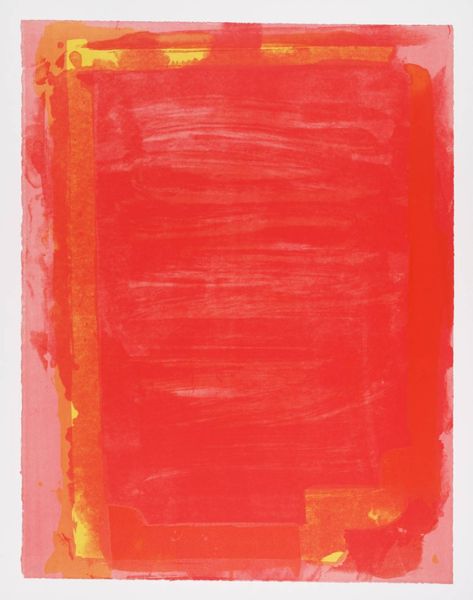
Copyright: Helen Frankenthaler,Fair Use
Curator: This is "The Red Sea," a 1982 monotype by Helen Frankenthaler, an important figure in abstract expressionism and the development of the stain painting technique. Editor: Wow. The red is so intense. It almost feels… violent, yet contained within this sort of hazy, dreamlike space. Is it supposed to represent the biblical Red Sea? Because if so, my initial reaction is not exactly Moses parting the waters. It’s something a lot more turbulent. Curator: The title certainly suggests a connection to the biblical narrative, but as an abstract work, it invites viewers to bring their own associations. Frankenthaler often drew inspiration from landscape, even in her most abstract works. Think about the sociopolitical backdrop too: the early 80s, Reagan's America, Cold War anxieties... a sense of tension and potential disruption was prevalent. Editor: That makes sense. The way the colors bleed and blend… it’s like she's wrestling with something. You can almost feel her moving the paint across the surface. And look, near the top, these subtle yellows struggling to push through—maybe a flicker of hope amidst all the… redness. Did she often work in such a fiery palette? Curator: Frankenthaler's color choices varied greatly throughout her career, but she was consistently interested in exploring the expressive potential of color. What makes "The Red Sea" especially compelling is how the monotype technique emphasizes spontaneity and unique textures. Its creation also reflects broader institutional changes during that time when there was greater experimentation with printmaking. Editor: It's amazing how such a simple technique can evoke so much emotion. It’s a beautiful paradox: a work that’s simultaneously raw and refined. Something about its presence… I think I can finally picture what the parting of the Red Sea felt like. The emotional and sensory impact. Curator: Exactly. And by engaging with the piece through personal reflections, hopefully, viewers are invited to critically re-examine this historical moment that the painting can allude to. Editor: Right. A painting holding a moment in history! Fascinating stuff. Curator: Indeed, it’s this capacity that shows how art really can become more than the paint, the colors and texture alone.
Comments
No comments
Be the first to comment and join the conversation on the ultimate creative platform.
